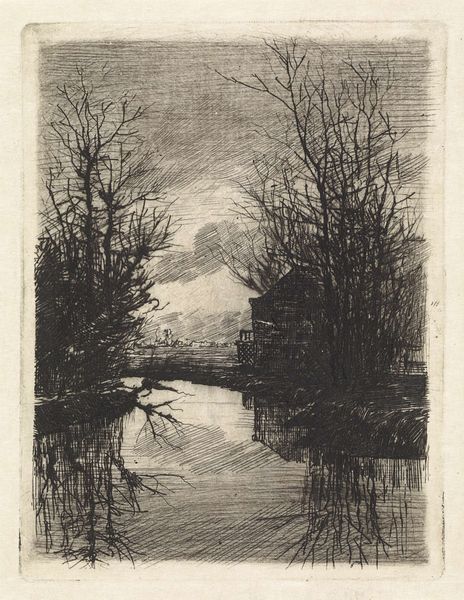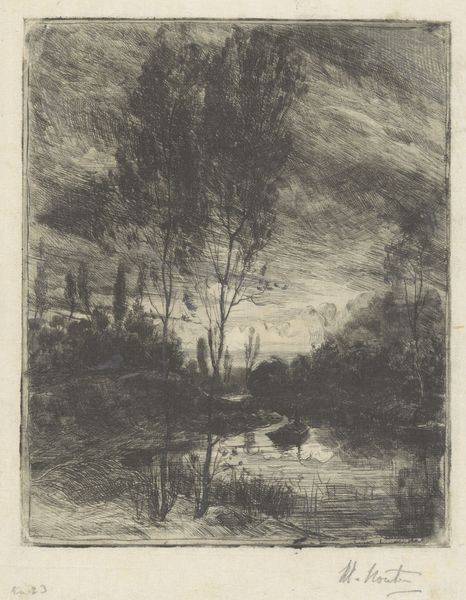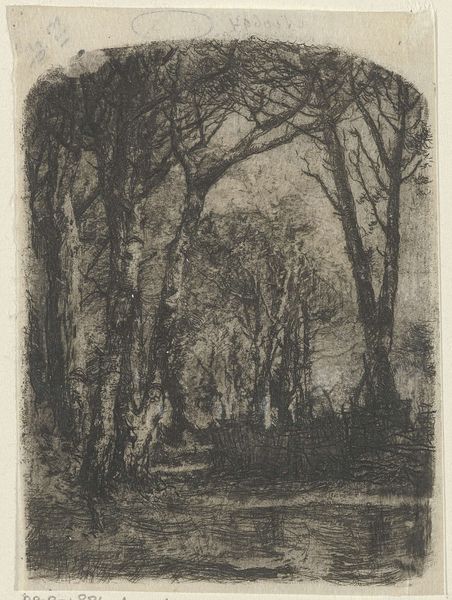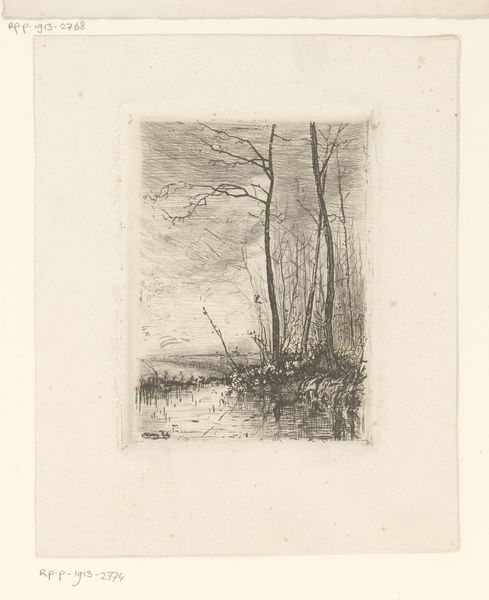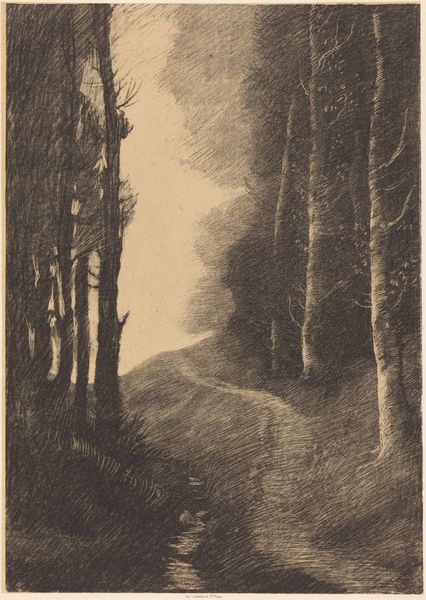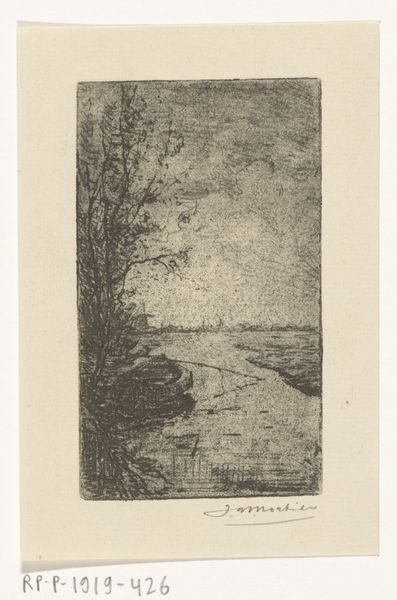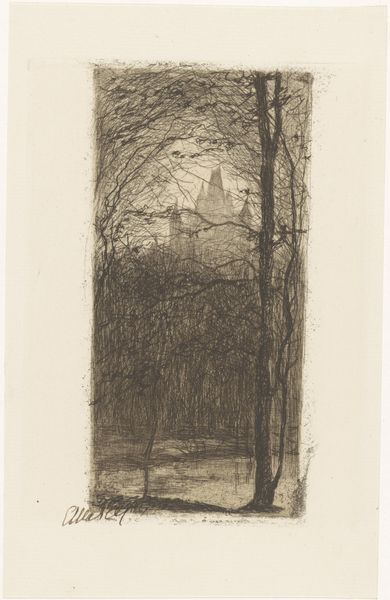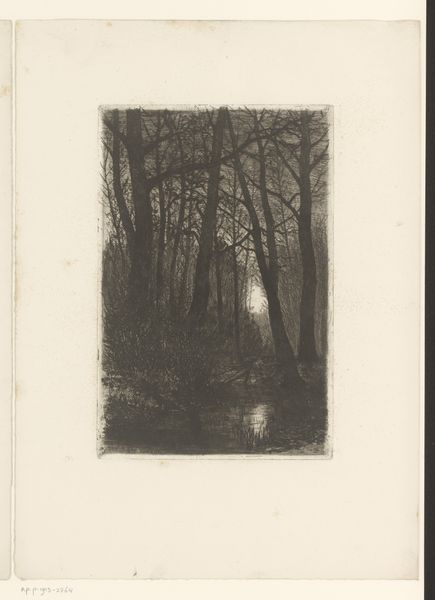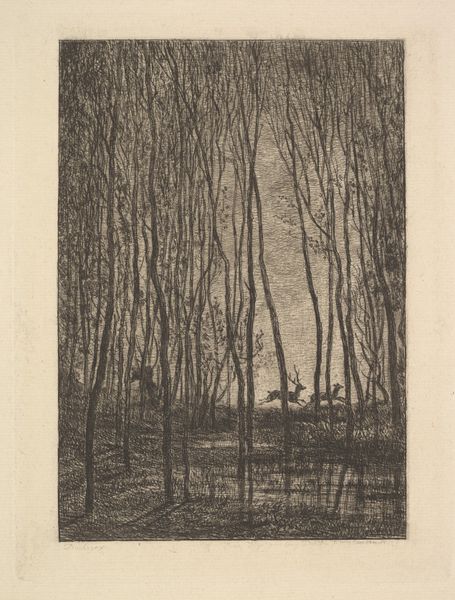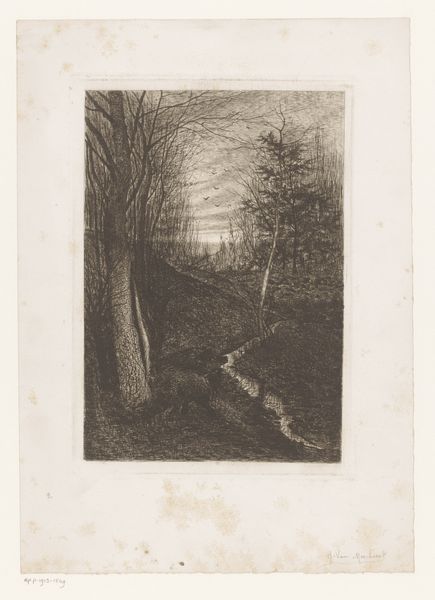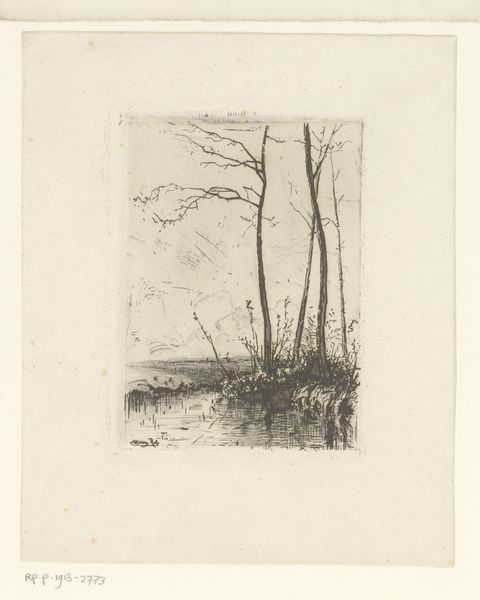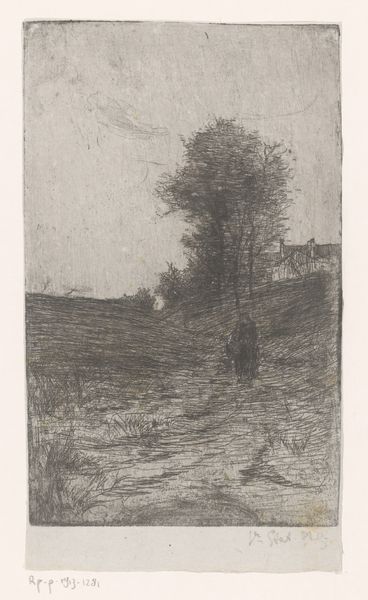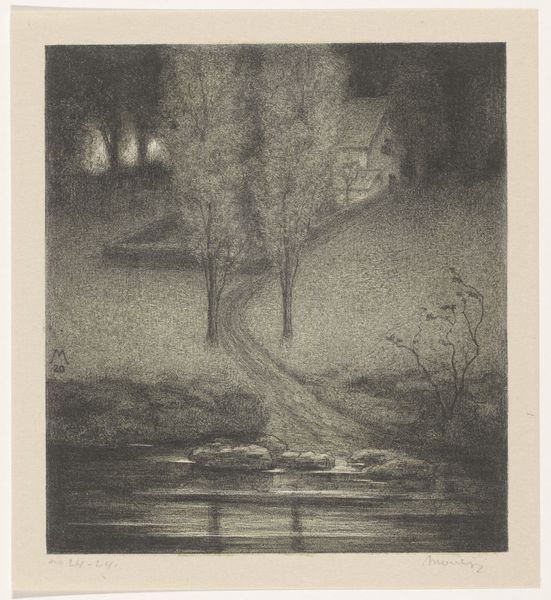
Dimensions: plate: 17 × 13.7 cm (6 11/16 × 5 3/8 in.) sheet: 27.8 × 22.3 cm (10 15/16 × 8 3/4 in.)
Copyright: National Gallery of Art: CC0 1.0
Vittore Grubicy made this print, Countryside, using etching. It presents us with a seemingly tranquil rural scene. But the story of how it was made speaks to some of the major cultural shifts in Grubicy’s native Italy. He came from a wealthy background, studied at the Academy of Fine Arts in Milan, and later managed the family business. But like many artists of his time, he became interested in the possibilities of art as a vehicle for social change. Grubicy was deeply involved with the Scapigliatura movement, a Milan-based group of artists, writers, and intellectuals who aimed to liberate Italian culture from academic conservatism. The fact that Grubicy used etching, a relatively inexpensive and reproducible medium, tells us something about the expanded role he envisioned for art, one that could reach a wider audience beyond the walls of the academy or the drawing rooms of the wealthy. Art historians can use archival sources, such as exhibition reviews, to understand how these new kinds of art were received in their own time. The meaning of art is always contingent on such historical context.
Comments
No comments
Be the first to comment and join the conversation on the ultimate creative platform.
